How does Smart Assist help the users?
- Getting Started
- Bot Building
- Smart Agent Chat
- Conversation Design
-
Developer Guides
Code Step Integration Static Step Integration Shopify Integration SETU Integration Exotel Integration CIBIL integration Freshdesk KMS Integration PayU Integration Zendesk Guide Integration Twilio Integration Razorpay Integration LeadSquared Integration USU(Unymira) Integration Helo(VivaConnect) Integration Salesforce KMS Integration Stripe Integration PayPal Integration CleverTap Integration Fynd Integration HubSpot Integration Magento Integration WooCommerce Integration Microsoft Dynamics 365 Integration
- Deployment
- External Agent Tool Setup
- Analytics & Reporting
- Notifications
- Commerce Plus
- Troubleshooting Guides
- Release Notes
Table of Contents
How does the SMART ASSIST come into play?What are the components of SMART ASSIST?Few points to NoteMultilingual Smart AssistIntelligent Virtual Assistants are always trained to cater to user queries that fall within a fixed scope. However, at times, customers might ask queries that don’t fall within the scope of the IVA. This tends to prevent the IVA from answering the User’s queries.
What is Smart Assist?
Smart Assist is a key component in Haptik’s conversational experience. The objective of the component is to respond back to the user smartly when the bot is not able to completely understand the User’s query. This should open up the pathways for the users to reformulate or redirect their queries, so that appropriate responses can be given.
How does the Smart Assist come into play?
The below graphic depicts the overall scheme of the SMART ASSIST -
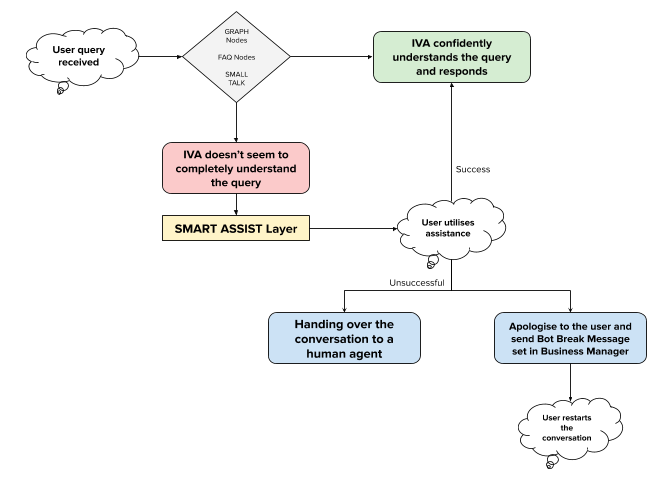
Here is a sample video explaining how Smart Assist works
What are the components of Smart Assist?
There are various intelligent nudges that the IVA performs, to make an attempt to bring the user back into the conversation. They are described below
- Asking a user to choose from a list of options, if the bot is not confident in its understanding of the query. This is similar to the “Did you mean?” feature. The difference is in the tonality of the IVA. In SMART ASSIST, it would be a bit apologetic, since the IVA was not able to understand the query of the user properly.
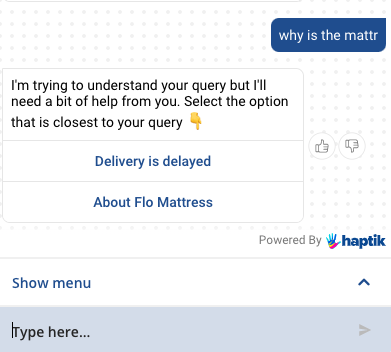
- There are occasions when users provide entity values with certain implicit assumptions but don’t provide their complete requirements. With SMART ASSIST, the IVA will depict a list of options, which can utilize the entity provided by the user and request users to choose an option to continue the conversation.
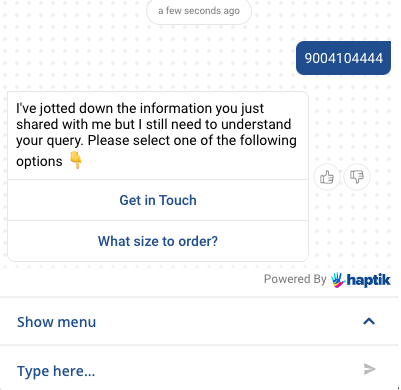
- The IVA would ask the users to rephrase their query when it’s too short and the IVA has not understood the complete context of the message.
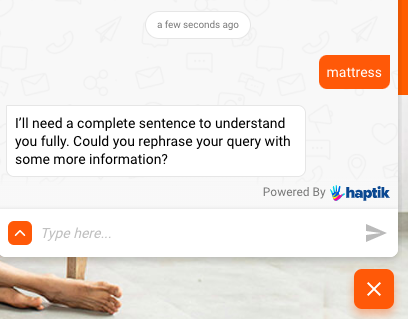
- The IVA will identify that the user’s query is out of the scope of the IVA and ask the user to take one more attempt at sending their query, by using different words. Another attempt might lead the IVA to recognize the query.
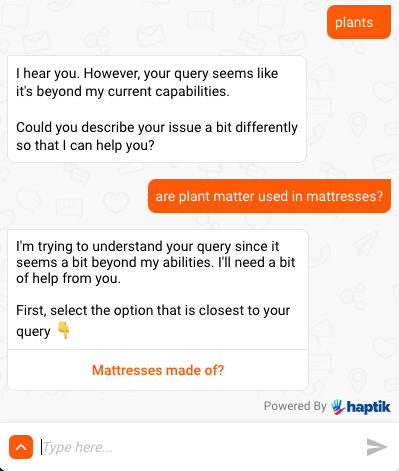
- The IVA will ask the users to summarise their query, if it’s too long and if the IVA is not able to understand it completely.
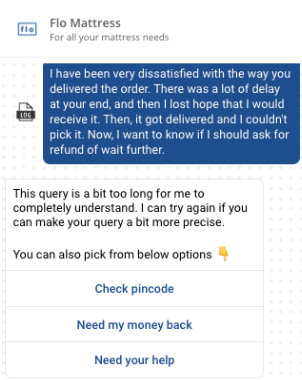
Few points to Note
- Users can pick an option amongst a list of options by replying with “1”, “2”, “3” after the list of options.
Demonstration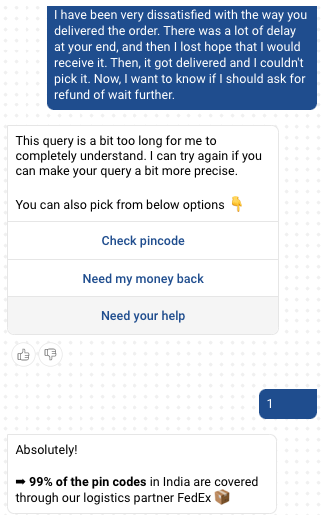
- The IVA would Break and not send out Smart Assist for a User message if the previous User message was responded with a Bot Break or a Smart Assist message.
- The button texts on the SMART ASSIST messages are fetched from the “Did you mean?” text section on the respective steps in the Conversation Studio.
- Text of the messages sent as SMART ASSIST responses is currently non-customizable and controlled directly at the platform level.
Multilingual Smart Assist
In case of multilingual bots, smart assist works exactly in the same way as mentioned above. The only difference being that in case of non-english bots, the Did you mean? button text in the User messages section of the respective step is auto-translated to the current language of conversation and used in the bot response.
